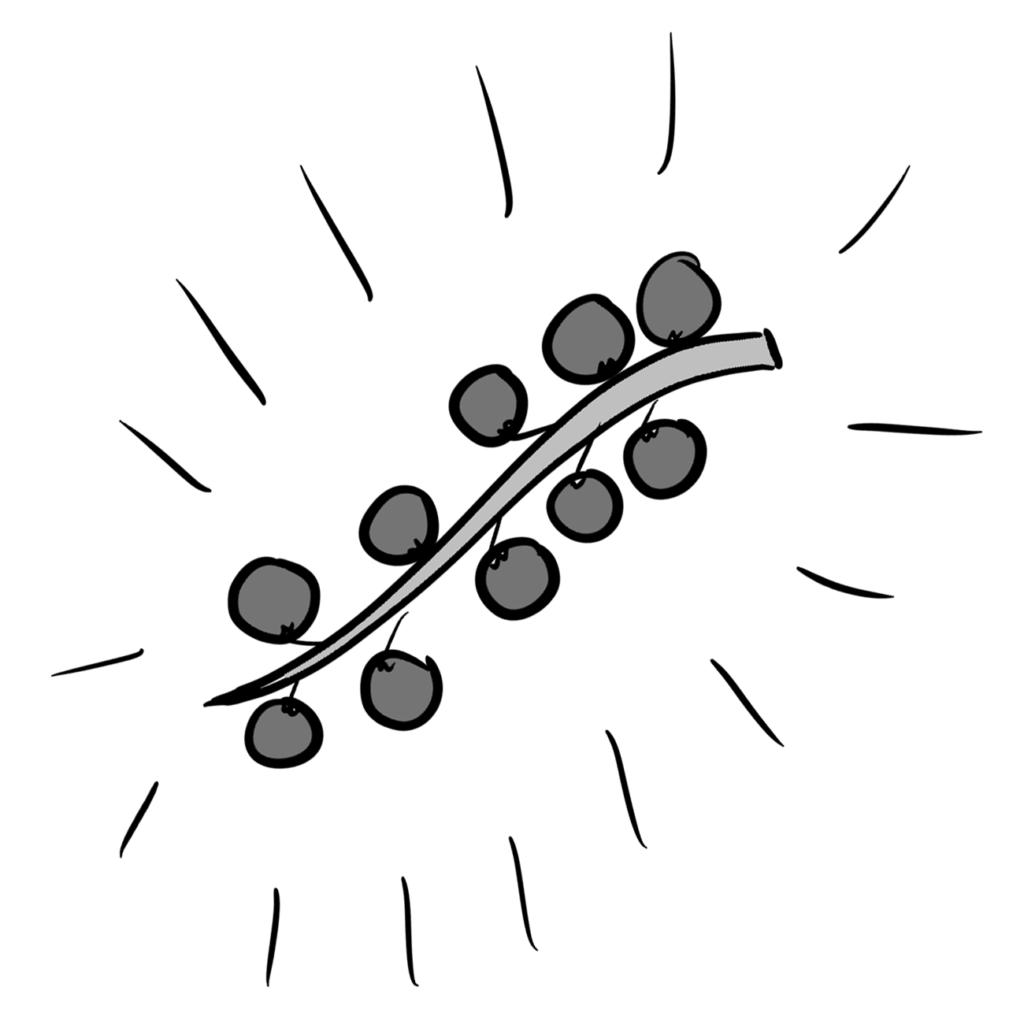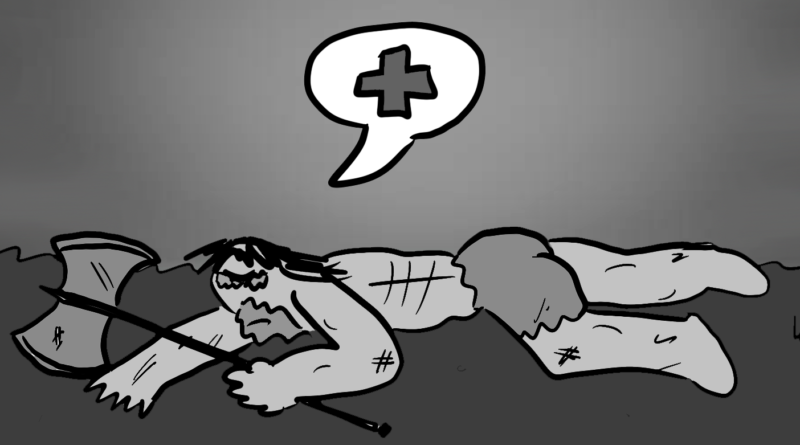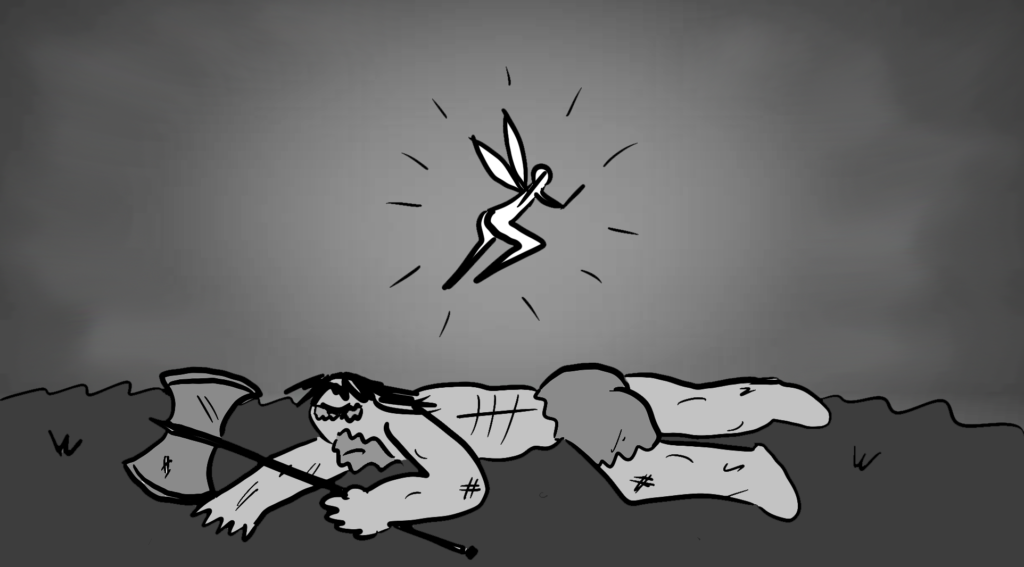D&D: Comparing Druid’s Healing Spells
Druid is the second-best healer in the game behind Cleric. This means you should be bringing at least one healing spell to the party. But which one should you prepare? Should you take more than one? Let’s find out! (As always, this guide is designed for early-level players, so we’re only covering the healing spells below 4th level.)
(Author’s note: To read about the one shapeshift form that can heal teammates, check out this article. I would not consider it a meaningful source of healing compared to your spells.)
1. Goodberry
 Let’s start by talking about the most unique healing spell Druid gets. Goodberry is an oddball, granting you ten magic berries you can store and dole out within 24 hours to heal anyone for one hitpoint per berry. It’s certainly interesting, arguably the best out-of-combat heal available to you. 10hp is reliably more than cure wounds or healing word will be doing per cast. It’s also your best bet if multiple teammates are down, as 1hp is enough to get them each conscious again. Another nitpicky strat is to burn all your remaining spellslots on goodberry before a long rest. Technically, 8 hours later you can walk around with an entire cornucopia of healing berries on your next adventure.
Let’s start by talking about the most unique healing spell Druid gets. Goodberry is an oddball, granting you ten magic berries you can store and dole out within 24 hours to heal anyone for one hitpoint per berry. It’s certainly interesting, arguably the best out-of-combat heal available to you. 10hp is reliably more than cure wounds or healing word will be doing per cast. It’s also your best bet if multiple teammates are down, as 1hp is enough to get them each conscious again. Another nitpicky strat is to burn all your remaining spellslots on goodberry before a long rest. Technically, 8 hours later you can walk around with an entire cornucopia of healing berries on your next adventure.
In practice, though, I have to admit I usually don’t prepare this spell. I’ve never seen a GM track rations closely enough to care about the nourishment part, and the party usually has enough healing abilities to put goodberry to shame. My primary job when healing is usually to revive a teammate in combat, and any other support spell will do a better job of that. Case in point…
2. Cure Wounds
Cure wounds is the archetypical D&D healing spell, the baseline everything else will be compared to. 1d8+Wisdom is a perfectly-fine amount of healing, with the main downside being the requirement that you’re close enough to touch your target. For a while, I used to cheekily bypass that restriction by using my owl familiar, who can cast touch spells in my stead and often had nothing better to do in combat. But eventually I stopped and switched to healing word anyway because…
3. Healing Word
…healing word (the spell you’re supposed to use for ranged healing) is a bonus action, whereas cure wounds costs an action. Druids don’t really use their bonus action regularly, so I just found it a lot easier to weave healing word into combat without sacrificing my turn. Sure, 1d4+Wisdom is a lot less healing, but its good enough to get somebody back on their feet, which is your usual job as a healer. And, (owl shenanigans aside), ranged healing is simply more versatile than touch healing. But once I leveled up enough, healing word also bit the dust in favor of…
4. Healing Spirit
Healing spirit is the best druid healing spell, hands down. I cannot recommend it enough. Sure, it costs a 2nd-level spellslot, but you’re gonna get an insane amount of healing from it (and it’s still a bonus action!) You summon a spirit that hovers wherever you placed it and automatically heals anyone under it for 1d6 per round up to 1+Wisdom times. In combat, this is perfect for reviving a downed teammate, not to mention other allies can pass under it and get some heals as well. Out of combat, you can all form a conga line and take turns. And if that’s not enough, you can use your bonus action to move it up to 30 feet! This is just a really versatile style of healing, and pretty much the only healing spell I ever prepare.
5. Lesser Restoration
I figure I should probably mention lesser restoration even though it’s not technically a healing spell. With a touch, you can automatically cure anyone suffering from disease, blindness, deafness, paralysis, or posion. These are all seriously annoying status effects, and D&D doesn’t have many easy ways to remove them. Somebody in the party should really have this prepared, though I openly confess that person is usually not me. All things considered, it’s pretty rare to encounter these status effects at lower levels. But at higher levels, once you have tons of spellslots, you really should consider taking this. It may not come into play often, but you’re gonna regret not having it when the time comes.
The main thing to keep in mind is that D&D 5e doesn’t have ‘dedicated healers.’ There aren’t really “tank, support, DPS” mindsets, and nobody should be healing 24/7, not even Clerics. Healing is mostly important for getting an unconscious ally back on their feet, or topping yourself off using an otherwise-wasted bonus action. In most situations, it’s more important to deal damage to the enemy and remove them from the board faster. But that doesn’t mean you want to skive on being prepared. And picking the right healing spells is a huge part of that!

